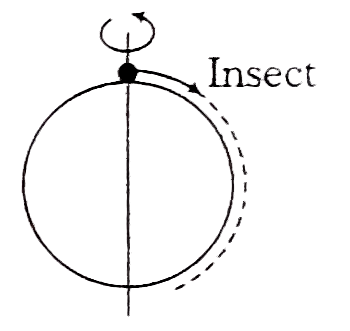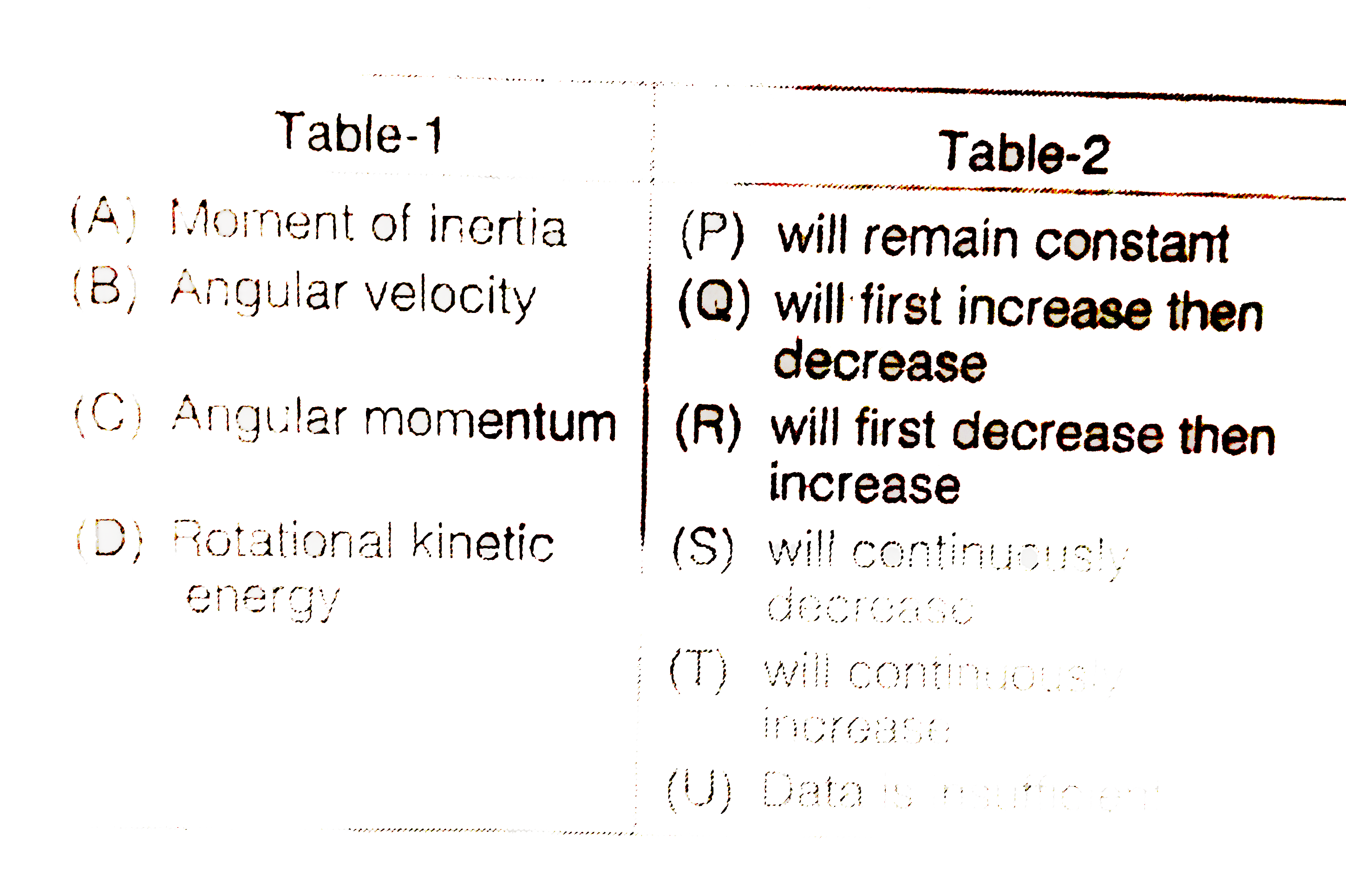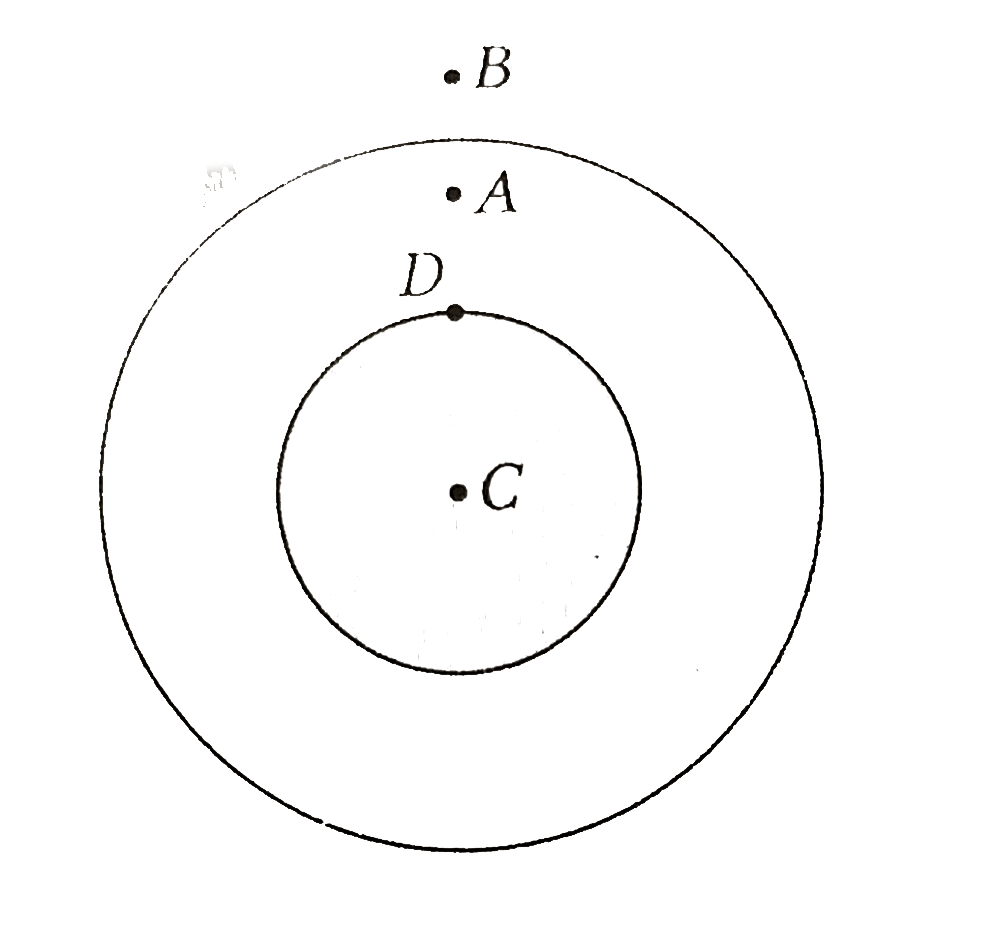A solid sphere is rotating about an axis shown in figure. An insect follows the dotted path on the circumference of sphere as shown in the figure.

Column-IColumn-II(A)Moment of inertia(p)Will remain constant(B)Angular velocity(q)Will first increase, then decrease(C)Angular momentum(r)Will first decrease then increase(D)Rotational kinetic energy(s)Will continuously decrease(t)Will continuously increase
The correct Answer is:(A→q,B→r,C→p,D→r)
Torque, τ=0
∴ L = constant, K=L22I and Iω= constant. Insect first moves away from the axis, then towards it. Hence, I will first increase and then decrease.
Topper's Solved these Questions
- BOOK - DC PANDEY ENGLISHCHAPTER - ROTATIONEXERCISE - (C) Chapter Exercises39videos
ROTATION
- BOOK - DC PANDEY ENGLISHCHAPTER - ROTATIONEXERCISE - (A) Chapter Exercises83videos
ROTATION
- BOOK - DC PANDEY ENGLISHCHAPTER - RAY OPTICSEXERCISE - Integer type q.14videos
RAY OPTICS
- BOOK - DC PANDEY ENGLISHCHAPTER - ROTATIONAL MECHANICSEXERCISE - Subjective Questions2videos
ROTATIONAL MECHANICS
Similar Questions
A solid sphere is rotating about an axis as shown in figure. An insect follows the dotted path on the cricumference of sphere as shown .
Match the following

 View Solution
View SolutionIf earth decreases its rotational speed. Match the following columns
Column-IColumn-II(A)Value of g at pole(p)Will remain same(B)Value of g at equator(q)Will increase(C)Distance of geostationary(r)Will decrease(D)Energy of geostationary satellite(s)Cannot sayView SolutionTwo concentric spherical shells are as shown in figure. Match the following columns

Column-IColumn-II(A)Potential at A(p)greater than B(B)Gravitational field at A(q)less than B(C)As one moves from C to D(r)Potential remains constant(D)As one moves from D to A(s)Gravitational field decreases(t)NoneView SolutionIf radius if earth is reduced to half without changing its mass, then match the following columns
Column-IColumn-II(A)Angular momentum of earth(p)Will become two times(B)Time period of rotation of earth(q)Will become four times(C)Rotational kinetic energy of earth(r)Will remain constant(D)(s)NoneView SolutionMatch the following
Column-IColumn-II(A)Kepler's first law(p)T2∝r3(B)Kepler's second law(q)Areal velocity is constant(C)Kepler's third law(r)Orbit of planet is ellipticalView SolutionIn elliptical orbit of a planet, as the planet moves from apogee position to perigee position to perigee position, match the following columns
Column-IColumn-II(A)Speed of planet(p)Remains same(B)Distance of planet from centre of sun(q)Decreases(C)Potential energy(r)Increase(D)Angular momentum about centre of sun(s)Cannot sayView SolutionMatch the following columns.
∣∣ ∣ ∣ ∣ ∣ ∣ ∣∣Column IColumn II(A)Constant positive acceleration(p)Speed may increase(B)Constant negative acceleration(q)Speed may decrease(C)Constant displacement(r)Speed is zero(D)Constant slope of a-t graph(s)Speed must increase(t)Speed must decrease∣∣ ∣ ∣ ∣ ∣ ∣ ∣∣View SolutionColumn - IColumn - II(A)Coordination number(p)FCC(B)9 places of symmetry.(q)Line passing through centres of two diagonal opposite edges(C)2 fold axis of symmetry(r)Decrease with increase in temperature(D)Coordination number = 12(s)SCC
View SolutionColumn IColumn II(A)Moment of inertia(p)newton/metre2(B)Surface tension(q)kg/(metre-sec)(C)Angular acceleration(r)kg-metre2(D)Coefficient of viscosity(s)newton/metre(E)Modulus of elasticity(t)radian/sec2
View SolutionMatch the following . When an independent positive charge moves from higher potential to lower potential, then
Table - 1Table - 2(A)its kinetic energy(P)will remain constant(B)its potential energy(Q)will decrease(C)its mechanical energy(R)will increaseView Solution

